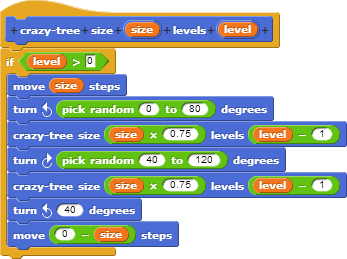Lesson 3.01: Built-In Functions
Learning Objectives
Students will be able to...
- Define and identify: function, arguments, calling, importing, returning
- Call the built-in
randintfunction, using arguments - Utilize code other people have written in the Python documentation
- Understand the difference between printing and returning
Materials/Preparation
- Do Now
- Lab - Magic 8-Ball
- Associated Reading - section 3.1 of Book
- Read through the do now, lesson, and lab so that you are familiar with the requirements and can assist students.
Pacing Guide
| Duration | Description |
|---|---|
| 5 Minutes | Do Now |
| 10 Minutes | Lesson |
| 35 Minutes | Lab |
| 5 Minutes | Debrief |
Instructor's Notes
- Do Now
- Give students 3-4 minutes to follow the instructions on the Do Now page.
- Debrief the answers to the questions on the Do Now by calling on students to respond.
Lesson
- Build Your Own Blocks vs Functions
- Ask students to recall how they built custom blocks in Snap!

- Function: a named sequence of statements that performs a computation. When you define a function, you specify the name and the sequence of statements. Later, you can “call” the function by name.
- Explain that we have already gotten used to calling functions like
type()andprint().
- Explain that we have already gotten used to calling functions like
- Ask students to recall how they built custom blocks in Snap!
- Ask students how they would create a random number generator.
- Sounds hard! Luckily someone has already done that: the random library (essentially a bunch of code written by someone else) which has many associated functions.
- Random in Snap

- Random in Snap
- Remind students what they saw in the Do Now - how to get a random integer: randint(0, 10).
- Identify the 0 and 10 in this example as arguments, or values passed into the function.
- Ask students what the argument is when we use
printortype randintgives back a value that you might want to store - this is called returning. If nothing is given back, the return value isNone.
- Ask students what the argument is when we use
- Identify the 0 and 10 in this example as arguments, or values passed into the function.
- Sounds hard! Luckily someone has already done that: the random library (essentially a bunch of code written by someone else) which has many associated functions.
- Contract
- Functions have a contract: you write down the arguments, their type, and the return type expected.
- Ask students what the contract of
randintis.- 2 values, of type integer, with an integer returned
- Since
randintis written by someone else there is a place where that contract is written out - Documentation. Have students begin the lab, which will instruct them to find the Python documentation for the random library.
- Ask students what the contract of
- Functions have a contract: you write down the arguments, their type, and the return type expected.
- Build Your Own Blocks vs Functions
Lab
- Students look through
randomlibrary documentation, practice importing different random functions and using them. - Create a Magic 8-ball program using a list and
randint.
- Students look through
Debrief
- Check student progress and completion of the lab, wrap up by taking any final questions.
Accommodation/Differentiation
If students are moving quickly, find another library to import from (see bonus in the lab) OR allow students to move on to creating their own functions.